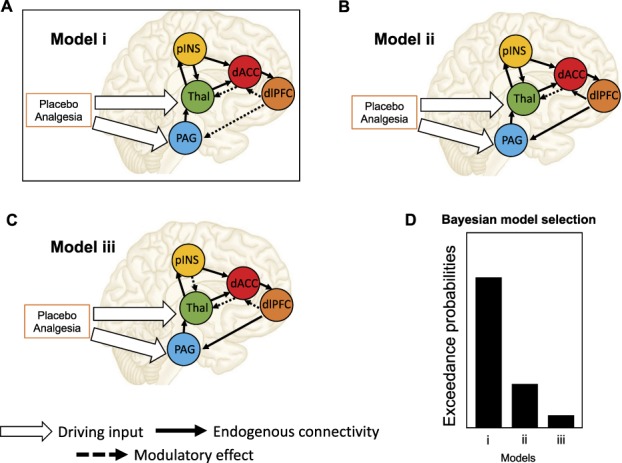Figure 2.

Dynamic causal modeling. Here we present a cartoon example of how DCM can be used to model placebo-related modulation of descending pain pathways. In DCM analysis, models are generated to predict BOLD activity of ROIs (eg, the dlPFC, PAG, and other regions, adapted from Ref. 114). Example models (A, B, and C), shown here, comprise endogenous connectivity (the black arrows), driving inputs (the white arrows), and modulatory effects (dotted lines) of the driving input on the endogenous connectivity but can vary on hypothesized connectivity between regions (for example, in A, B, and C, dlPFC connectivity varies). Placebo analgesia could thus be a driving input that can directly influence the activity of certain regions or modulate the intrinsic connectivity between regions. Models are compared using Bayesian model selection (BMS) to find which best explains the observed BOLD signal (D). For more information, see Ref. 51. DCM, dynamic causal modeling; dlPFC, dorsolateral prefrontal cortex; PAG, periaqueductal gray; ROI, region of interest; pINS, posterior insula; Thal, thalamus; dACC, dorsal anterior cingulate cortex.
